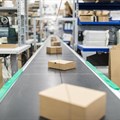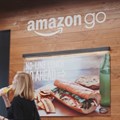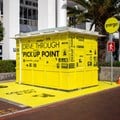There can be no doubt that the next era of retail success will be defined by the friction-free, or ultra-convenient, shopping experience. This will hold true for both the online and physical shopping journey - whereby consumers increasingly expect a quick, efficient and seamless experience.

Leon Coetzer, redPanda Software
To achieve this and retain customer loyalty, forward-thinking retailers are harnessing automation, mobile technology and in-store technology innovations.
Even prior to the coronavirus pandemic, which has arguably accelerated investment in markets like mobile technology and ‘m-commerce’, consumers were increasingly turning to mobile devices to augment the retail journey through searching online and pricing items beforehand, for example, as well as using mobile tap-and-go payment channels.
With global retail having entered a new phase of vastly reduced social contact in the wake of the pandemic, smart retail technology – and mobile apps in particular – are set to play an even more pivotal role in shaping the friction-free consumer experience.
Here’s how we are already seeing this happen in developed markets such as the US, Canada and UK – with emerging markets like South Africa likely to follow a similar technology trajectory.
Scan and go gaining traction
Perhaps unsurprisingly, retailers are quickly moving towards a more self-driven checkout process, and removing the reliance on checkout staff and physical interactions. The Amazon Go store model has been pushing global retailers toward this model, and we’re seeing early successes and key learnings in these experimental stages.
For example, Walmart's (Canada) fast lane allows customers to scan their items individually with an app as they shop, before they proceed to a specific cashier-less checkout lane. Then there is Sam's Club in the US, revealed a new cashier-less store that has a similar checkout process that sees customers using a mobile app in the store.
Unlike many existing self-scan options in the UK and elsewhere, the emerging mobile scan-and-go model removes the ‘friction’ of using the retailer’s scanning device – and also enables retailers to integrate key mobile shopping elements such as personalised offers, loyalty programmes and the all-important mobile tap and go payment options.
Virtual queue management
Besides driving and augmenting the in-store experience, mobile technology will soon be leveraged to optimise the customer’s journey before they leave their homes. One such example can be found in virtual queue management. During the health crisis, social distancing restrictions have required retail personnel to monitor outside queues and facilitate the entry and exit of shoppers.
Mobile apps will soon remove the need for personnel in this process, as retailers enable customers to book a slot online to visit the store in question. As customers approach the retail outlet, they can call a specific number – and the retailer can use their geo-location to generate a ‘ticket’ (similar to the process in a Home Affairs office, for example), and be called in when it’s their ‘turn’ to enter and shop.
In various retail outlets, this virtual queue management capability can allow customers to receive real-time text message updates on their position in the queue, a wait-time estimate, and more.
This type of mobile queue management technology is in its early stages of development – and will also provide numerous possibilities to integrate personalised offerings, communicate with shoppers in real time, and enable an engaging and highly customised shopping experience overall.
Kerbside pick-up emerging as key retail offering
With governments continuing to urge social distancing, many retailers are providing click-and-collect services along with kerbside pick-up – which is often enabled and supported by mobile apps. According to the Financial Times, the US electronics retailer Best Buy moved all of its stores to kerbside shopping in late March, allowing it to prevent a more dramatic drop in sales.
The FT also reported that US click-and-collect sales are expected to top $58bn in 2020 (a 60% increase from 2019), thereby “giving physical stores renewed utility as lockdowns ease but social distancing restrictions persist”.
In South Africa, as the country eases into Level 3 of lockdown restrictions, we have also seen popular restaurant chains KFC and Nando’s announce that they would be introducing kerbside collections and parcel delivery service Pargo recently launched a new click and collect drive-through service that allows customers to place online orders with multiple stores, and then to collect their parcels themselves at a centralised point.
Although many shoppers are looking forward to a more ‘normalised’ environment in which there will be no social or physical restrictions, the pandemic has undoubtedly shifted the mobile consumer journey into a super-fast gear…and neither retailers nor shoppers will be willing to give up the gains made in speed and convenience.





































